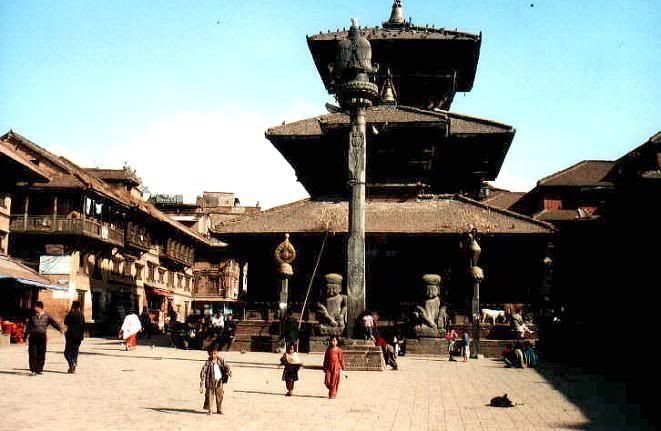DATTATREYA SQUARE

The Dattatreya Square is Bhaktapur’s third dazzling gem. The seat of royalty till the 15th century, the area still houses a great number of historic monuments including many wondrous Maths (residential mansions) and temples.
The Dattatreya Temple is the main attraction of the Square. Constructed by King Yaksha Malla, the giant three-storied temple is believed to have been built with the stem of a single tree. Having defied series of calamities, it still bears testimony to the incredible achievement made in those regal days of the Nepalese history.
The Wane Layaku complex, which lies to the south-western corner of the Dattatreya temple, is noted for Bhaktapur’s second Taleju shrine. Enclosed with old houses, the courtyard sees throngs of people, especially during the Mohani (Dashain) festival, when a rare Ghau-batacha (Water Clock) is put on public display. During the Malla Era, the water-clock was used by the then rulers and astrologers for fixing "propitious moments" for commencing and concluding various state and social ceremonies.
The Peacock Window, which is also called the "Mona Lisa of Nepal", is a rare masterpiece in wood. Dating back to the early 15th century, the unique latticed window has an intricately carved peacock in its center. The window adorns the Pujari Math which, with rows of exquisitely carved windows and doors, is equally appealing. The building presently houses the Woodcarving Museum. The museum has a rich collection of unique pieces in wood.
The Brass & Bronze Museum, housed in the historic Chikanpha Math, is the next highlight of the Square. It has a wide collection of bronze and brasswares including the ritual jars, utensils, water vessels, pots, spittoons and similar other household items.
Near the Dattatreya Square is the Wakupati Narayan Temple. Dedicated to Lord Vishnu, the two-storied structure is a unique specimen of pagoda architecture. Next to it is Bhaktapur’s second Pottery Square.
Besides Bhaktapur’s three well-acclaimed Squares, there are many other spots within the expanse where visitors can experience a lot more. The recently-restored Ta-Pukhu (Siddha Pokhari), Ancha-Pukhu, Khancha-Pukhu, Barahi Temple, Lokeswor Mahavihar, Nava Durga Temple, the Terra-cotta Windows at Tuchhimala and Nepal’s largest Shiva Lingum at Hanumanghat are some of Bhaktapur’s monumental glories which tourists visiting this ancient city simply do not like to miss.



